Full of mystery and charm : Maharashtra’s caves
They lie hidden from public view, yet they have proudly put Maharashtra on the world map! Today we take you through Maharashtra’s hidden wonders, nestled comfortably amidst its lush hills, which are famous worldwide as some of the most thrilling examples of ancient arts and crafts.
Once the abode of Buddhist, Jain and Hindu monks, the caves of Maharashtra are known to fascinate one and all visiting it by their stunning works of art. World Heritage sites by UNESCO, these caves some even dating back to the 2nd, 3rd and 4th BC are famous for their detailed carvings and exquisite frescoes.
1. Ajanta Caves:
Dating back to the 2nd century BC, the 29 caves of Ajanta are famous worldwide for their fascinating frescoes and lie in the U shaped gorge approx 4 km away from the Ajanta Village. Consisting of Viharas (monasteries) and Chaitya Grihas (monumental halls), they were used by monks as dwelling quarters, as well as for meditation and worship. While the size of the caves vary from 35 ft to 110 ft in height, so do its paintings and sculptures, with some walls depicting scenes of the Jataka Tales i.e. stories of the Buddha’s former existences as Bodhisattva, other images seen within the caves include the life of Gautam Buddha, paintings of kings, their subjects, slaves, plants, birds and beasts.
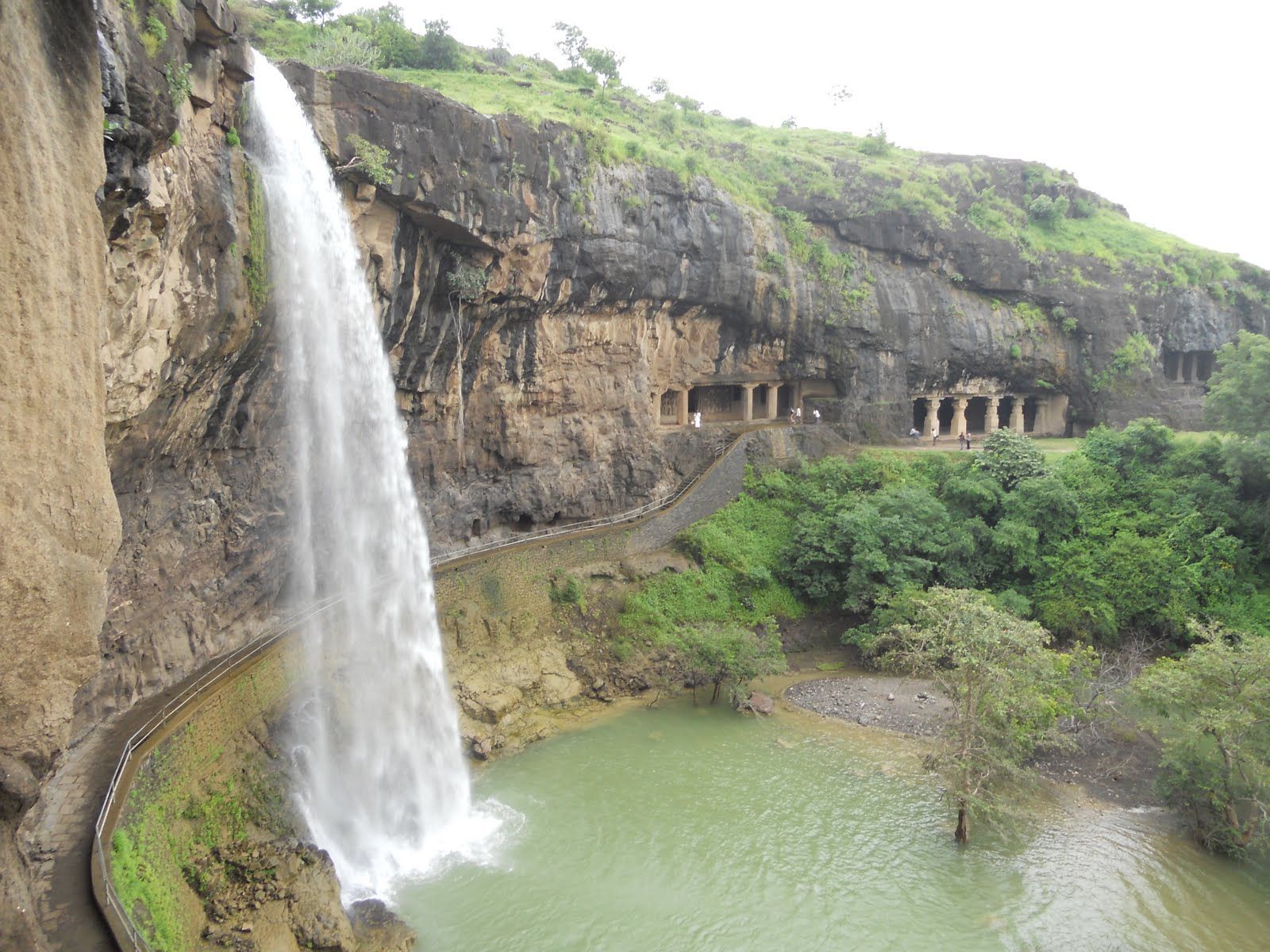
Also adorning its walls are images of celestial beings, yakshas, apsaras (heavenly dancers), gandharvas (divine musicians) and kinneras (half human and half bird). These caves are known to worship Buddha in two forms, the Hinayana Phase, where he was worshipped as a symbolic form and the Mahayana Phase where his idol was worshipped. Of the 29 caves here, the 1st, 2nd, 16th and 17th caves are most famous for their works of art.
2. Ellora Caves:
Carved out of the Charanandri hills, the Ellora caves are a perfect example of religious tolerance and consist of 17 Hindu, 12 Buddhist and 5 Jain caves. Also referred to as ‘Verul Leni’; these caves built during the 5th – 10th centuries, at a distance of 30 km north-northwest of Aurangabad and are known for their stunning sculptures.
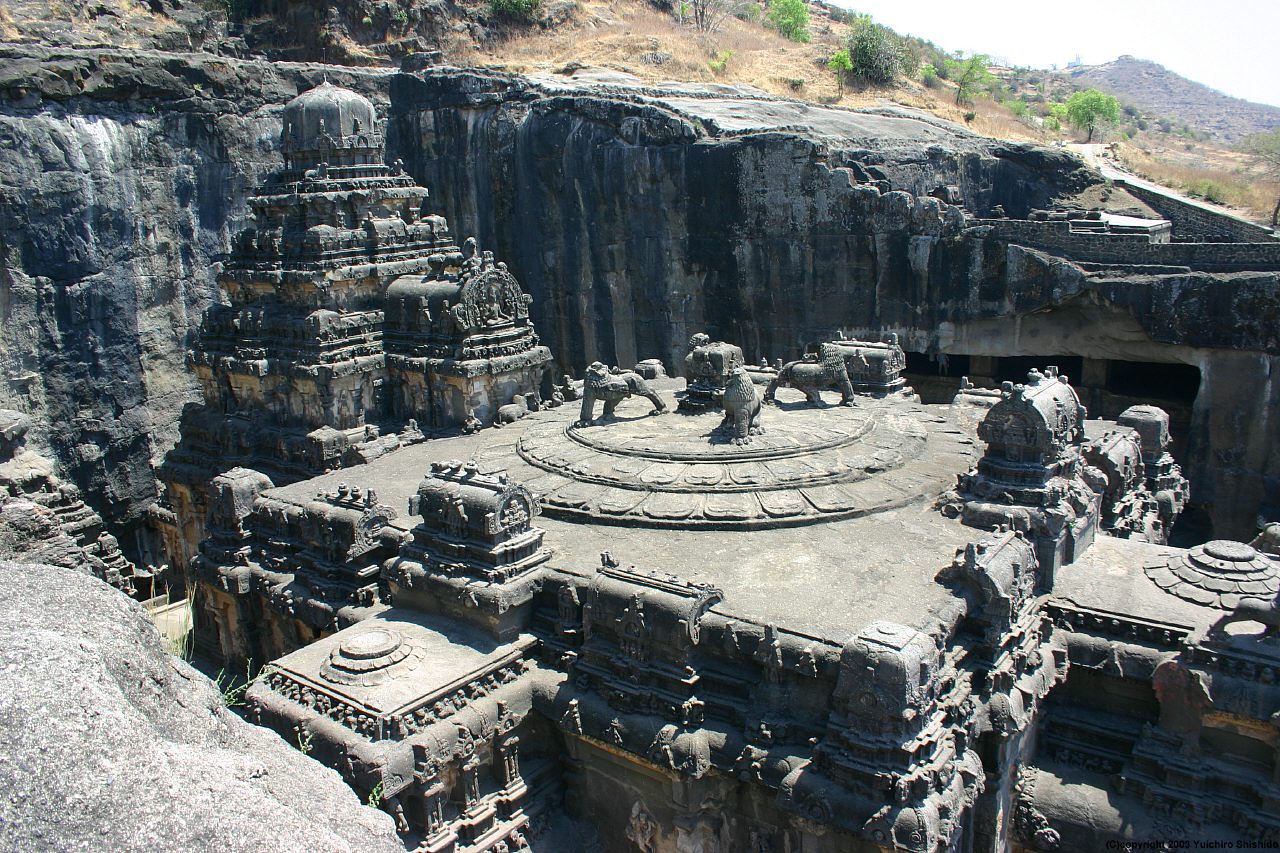
Of the many Hindu caves carvings here, the most impressive is the 16th cave that houses the Kailashnath Temple. Said to be one of the largest monolith structures in the world, a job that took nearly a century to complete, the temple is known for its images of deities, mythical characters, scenes from great epics like the Mahabharata and Ramayana, etc. This temple also forms the backdrop for the famous Ellora festival that is held here annually.
The “Viswakarma cave” or Carpenters cave is the most famous of all Buddhist caves. Housing a 15 foot statue of the Buddha, its ceiling has been carved in such a way so as to give an impression of wooden beams, thus earning its name ‘Carpenter’s Cave.’
The Jain Caves are known for their delicate works of art; though smaller in comparison to the other caves here, they are just as remarkable; the Chhota Kailash, Indra Sabhaa and the Jagannath Sabha are the most important caves.
3. Elephanta Caves:
Another heritage site, the Elephanta caves located on the Elephanta Island near Mumbai harbor, date back to the 9th – 13thcenturies. Carved out of solid rock, the seven caves here are known for their sculptures, and temple dedicated to Lord Shiva. Once the capital of coastal kingdoms, it derives its name from the 13 foot elephant statue that was found at its entrance. Apart from the many sculptures found here, the most important is in the main cave, where a sculpture of Maheshamurti, a three headed sculpting of Lord Shiva depicting the creator, preserver and destroyer form is seen. The Elephanta Festival, a festival of Music and Dance organised by the Maharashtra Tourism Development Corporation (MTDC) held annually during February is a great time to visit the caves.
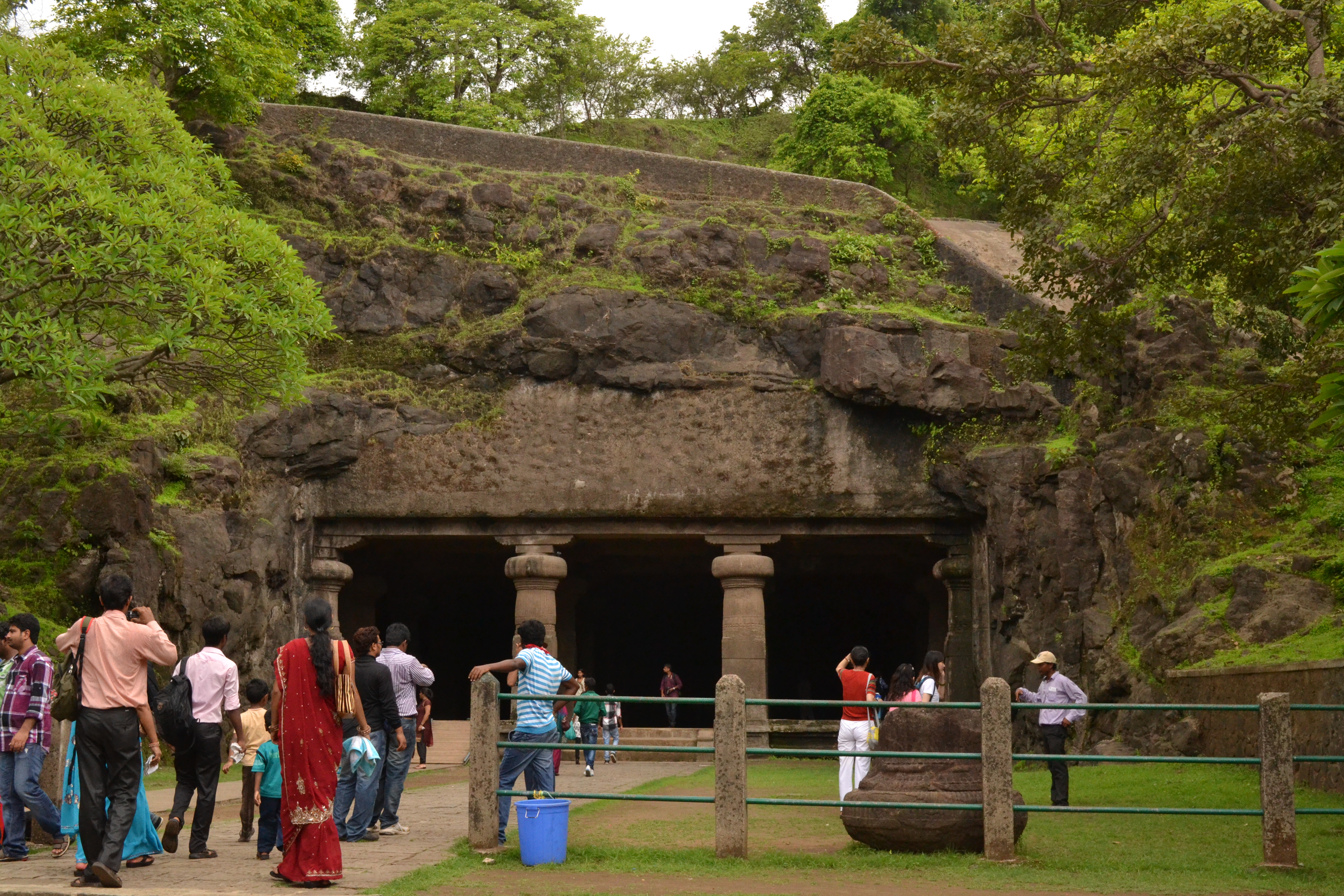
4. Aurangabad Caves:
These caves date back to the 6th and 7th century, and consist of 10 caves found in two different locations. Cut out of soft basalt rock, the work on these caves are just as fascinating as the works on the Ajanta caves; here too one can find scenes depicting the Jataka Tales, sculptures of women sporting wonderful ornaments and hairstyles, etc. Apart from this, one can also find sculptures of Buddha and Ganesh, apart from sculptures of Bodhisattva.
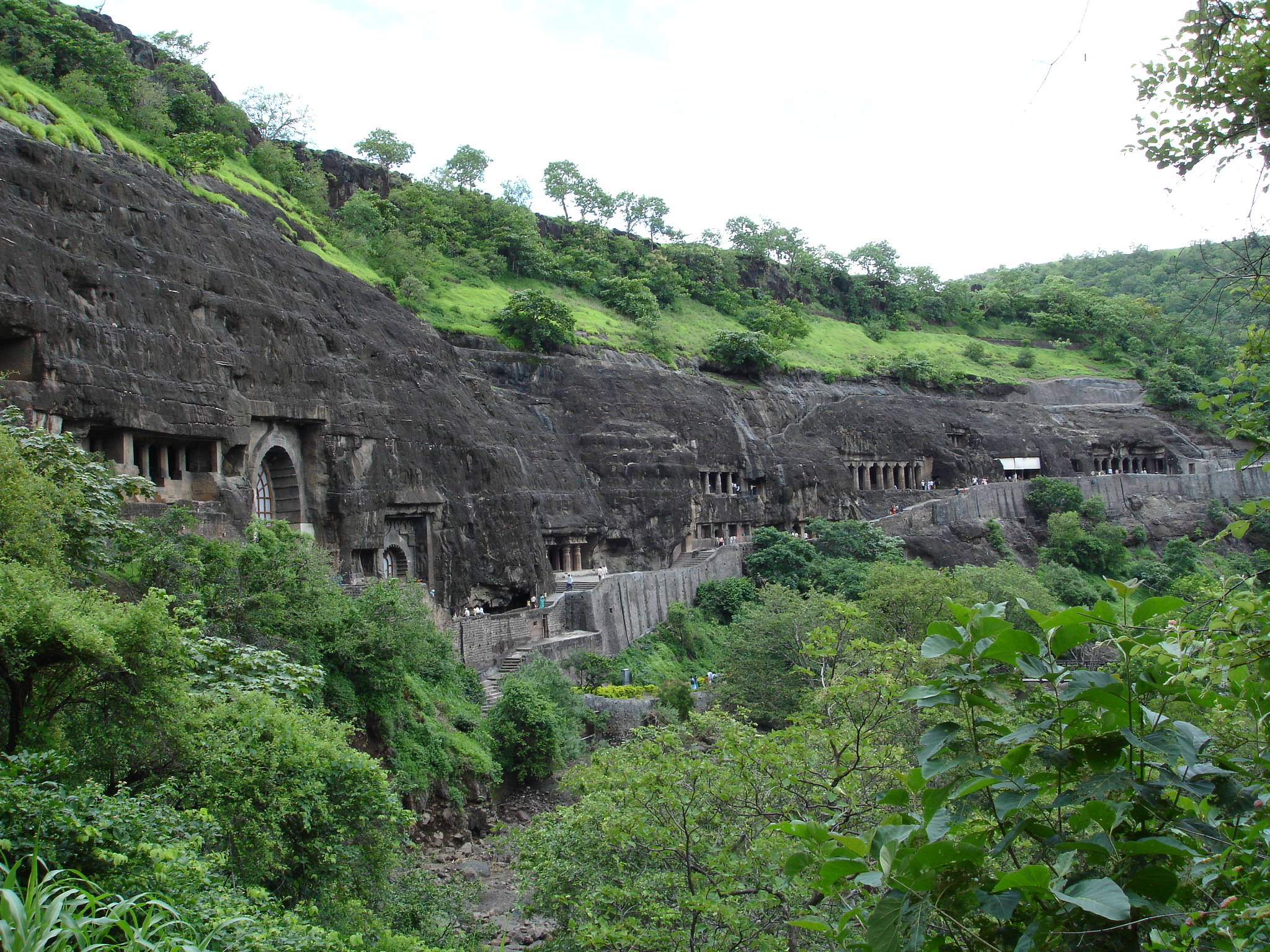
5. Pitalkhora Caves:
Also dating back to the 2nd century, the Pitalkhora caves are known to house several carvings and paintings that date from the 1st century B.C. to the 5th century AD. Thirteen caves in total, these caves situated just 40 km away from Ellora caves, are adorned with several remarkable sculptures, and even the scriptures of Yaksa. These caves consisting mainly of Viharas or Buddhist monasteries also sport several animal motifs, chaitya windows and sculptures of serpents, elephants and other animals.
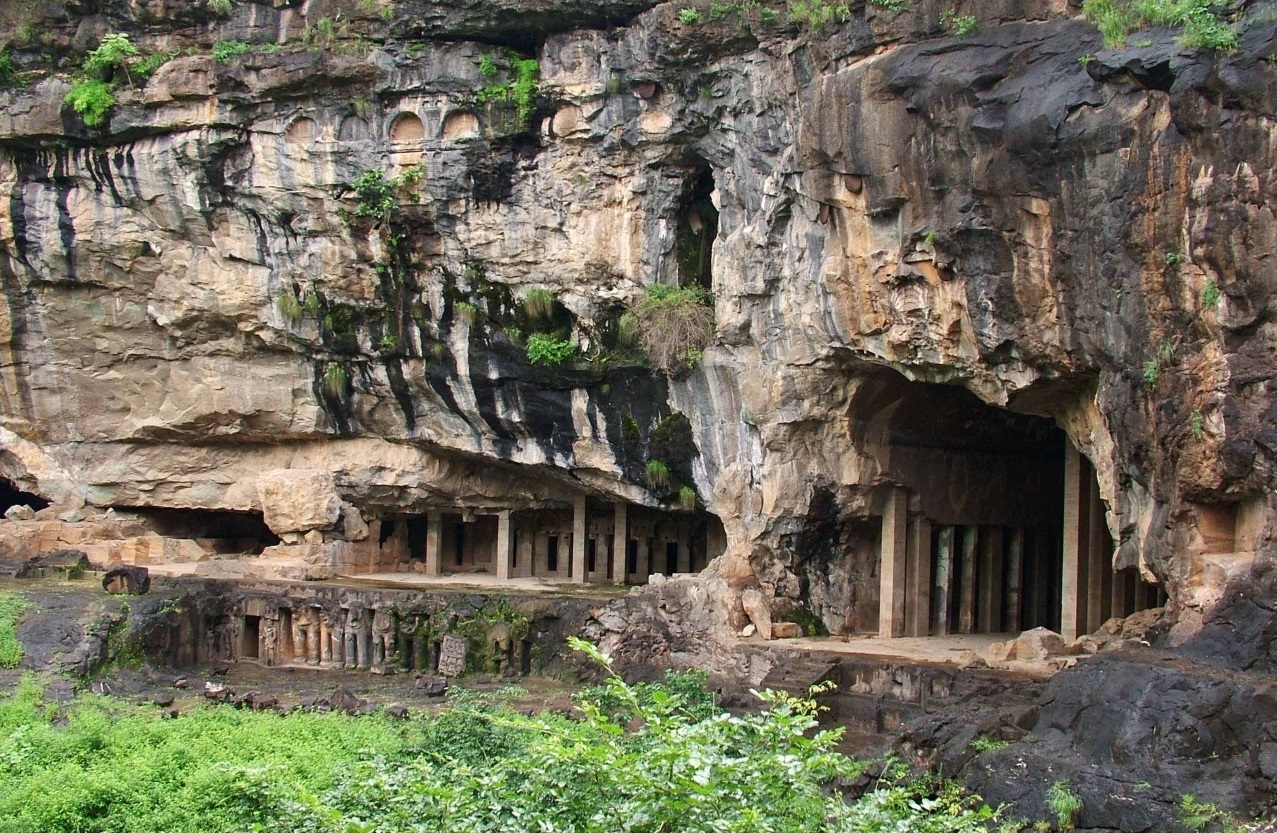
6. Ghorawadi Caves:
Carved out of a single rock formation of a hill these ancient caves date back to the 3rd and 4th century. One can find several caves here, dedicated to several different deities such as Vitthal, Lord Shiva, and Saint Tukaram etc. The Shiva Cave that houses a Shivling attracts many during the festival of Mahashivratri.
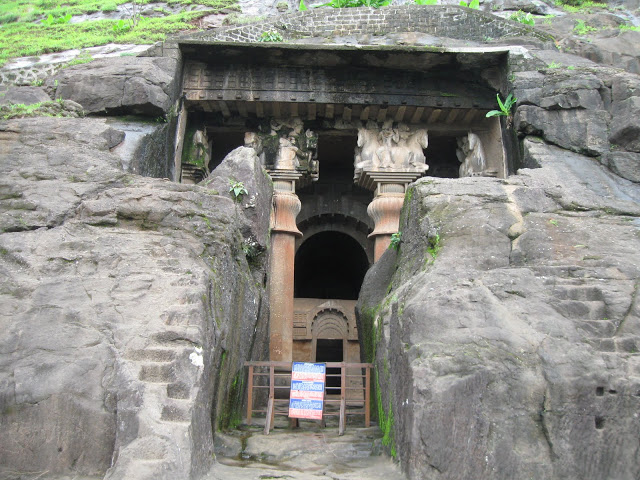
7. Junnar Caves:
Situated on the Mumbai-Aurangabad route, these caves founded between the 2nd century BC and 3rd century AD can be divided into three main groups, the most prominent ones being the Tulija Lena and the Ganesh Lena Caves. The Tulija Lena sports a Chaitya hall that is ornamented with a circular dome ceiling, while the Ganesh Lena group consists of smaller viharas or monasteries.
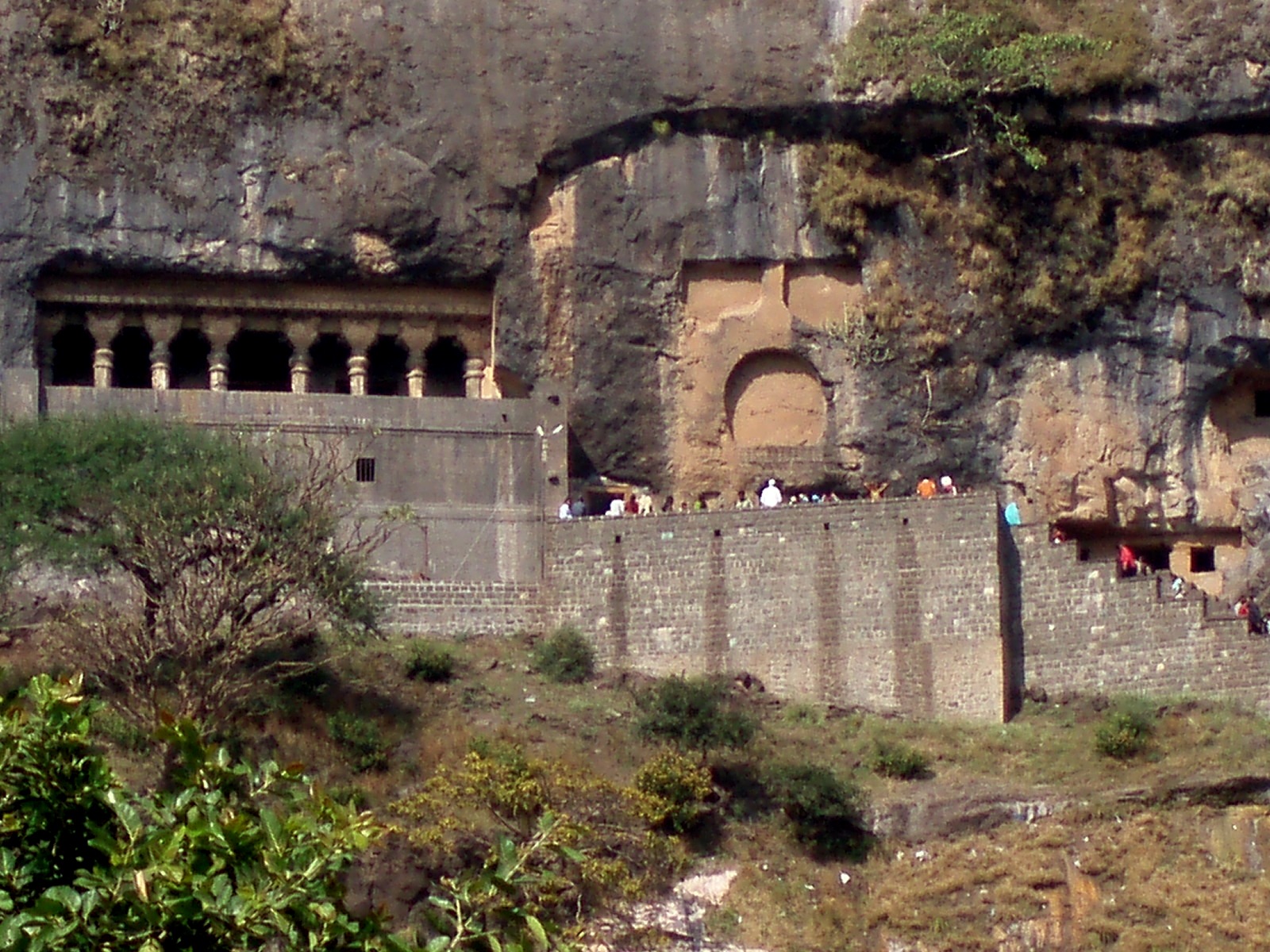
8. Karla Caves
ust as intricate as the works found in the Ajanta and Ellora, the Karla Caves are located just 20 km from Lonavala. Dating back to the 2nd century, they are known for their beautifully carved Chaitya Hall, pillars and stone stupa. Some of the carvings here include figures of men, women, elephants, along with pillars with lions on it.
9. Kanheri Caves:
The Kanher caves are situated right at the centre of the Sanjay Gandhi National Park (Borivali – Mumbai). A total of 109 caves, they date back to the 1st century BC and 9th century AD. Seen here are sculptures of Goddess Tara, Goddess Bhrukti, and Lord Buddha in the Avalokiteswara incarnation.
10. Pandavleni/ Pandu Lena Caves:
Built by Jain kings, these caves date back by nearly 2000 years and were used to house Jain saints like Manibhadraji, Tirthankara Vrishabdeo and Ambikadevi. Here one can also find several sculptures of Bodhisattvas and Buddha.
While the Ajanta, Ellora and Elephanta Caves are renowned as World Heritage sites, the others mentioned above too are of tremendous significance attracting tourists from all corners for their charm and beauty.
You May Be Interested IN